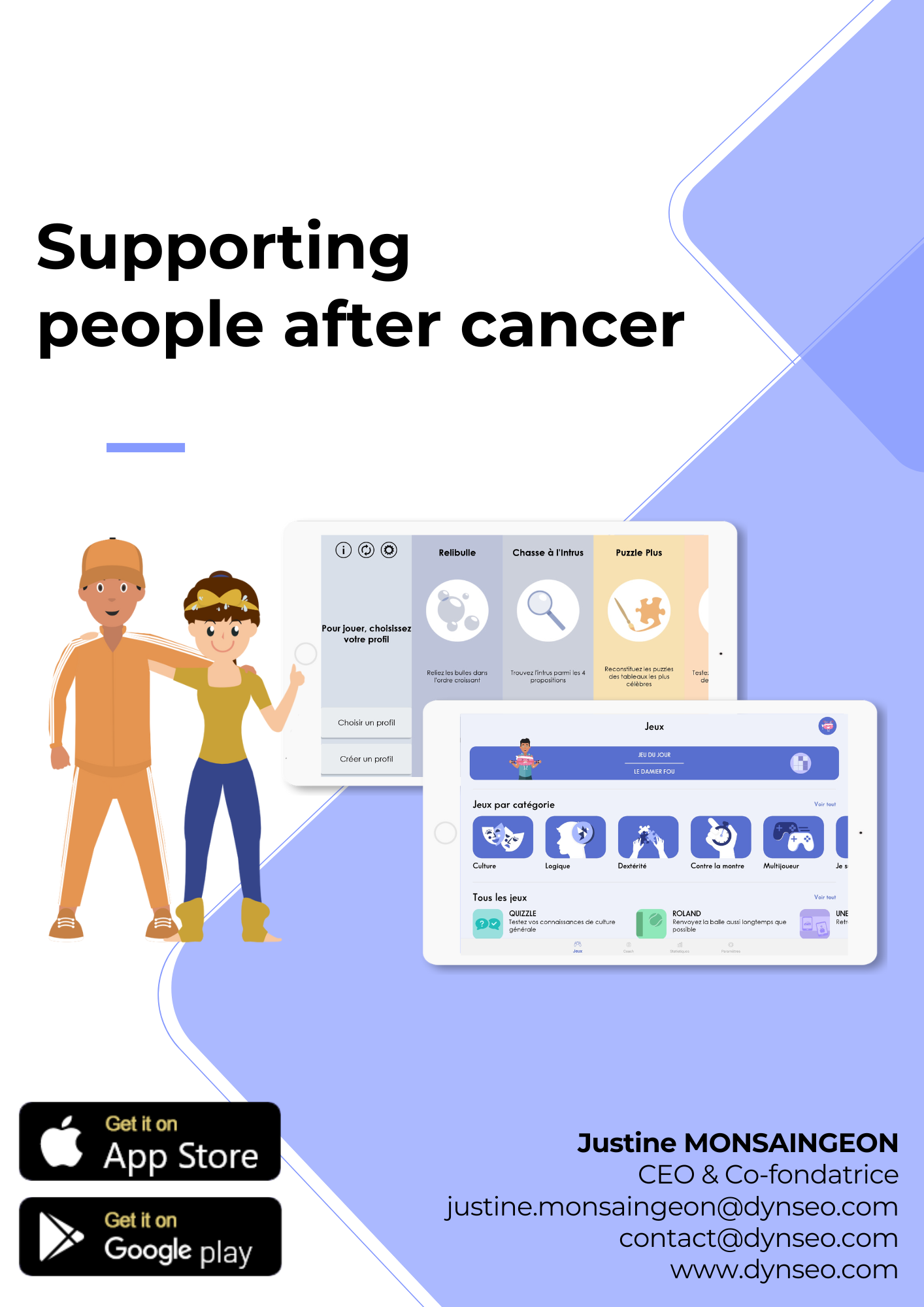As we navigate the complex journey of cancer recovery, we often overlook the profound impact that the disease and its treatments can have on our ability to communicate. For many cancer survivors, speech therapy becomes an essential component of rehabilitation, addressing challenges that arise from surgeries, radiation, or chemotherapy. These challenges can manifest as difficulties in articulation, voice quality, or even cognitive communication skills.
The emotional toll of cancer can further complicate these issues, making it crucial for survivors to engage in effective speech therapy that not only aids in physical recovery but also supports emotional well-being. By focusing on the unique needs of cancer survivors, speech therapy can help restore confidence and improve quality of life. In this context, we recognize that speech therapy is not merely about regaining lost abilities; it is also about empowering individuals to express themselves fully and authentically.
The journey through cancer treatment can be isolating, and the ability to communicate effectively can significantly enhance social interactions and personal relationships. As we explore the various facets of speech therapy for cancer survivors, we will delve into the innovative tools and techniques that are transforming this field. By understanding the role of digital tools in speech therapy, we can better appreciate how they are reshaping the landscape of recovery for those who have faced the challenges of cancer.
The Role of Digital Tools in Speech Therapy
In recent years, the integration of digital tools into speech therapy has revolutionized the way we approach rehabilitation for cancer survivors. These tools encompass a wide range of applications, software, and devices designed to enhance communication skills and facilitate practice in a user-friendly manner. By leveraging technology, speech therapists can create personalized treatment plans that cater to the specific needs of each survivor.
This adaptability is particularly important in the context of cancer recovery, where individual experiences and challenges can vary significantly. Digital tools not only provide engaging and interactive ways to practice speech but also allow for real-time feedback and progress tracking. Moreover, digital tools can bridge the gap between therapy sessions, enabling survivors to continue their practice at home.
This continuity is vital for reinforcing skills learned during therapy and ensuring that progress is maintained over time. With the convenience of mobile applications and online platforms, survivors can access resources whenever they need them, making it easier to incorporate speech exercises into their daily routines. As we delve deeper into the benefits and types of digital tools available for speech therapy, we will uncover how these innovations are enhancing the recovery experience for cancer survivors.
Benefits of Using Digital Tools for Cancer Survivors in Speech Therapy

The integration of digital tools in speech therapy for cancer survivors offers numerous advantages, addressing both practical and emotional challenges that survivors may face during their recovery journey. Below, we outline the key benefits and illustrate how these tools can enhance therapy outcomes.
1. Improved Accessibility
- Overcoming Physical Barriers: Cancer survivors may experience limited mobility due to treatment-related fatigue or other health complications. Digital tools enable access to therapy from the comfort of home, reducing the need for travel.
- Reaching Remote Areas: Survivors in rural or underserved regions can benefit from virtual therapy sessions and online platforms, ensuring they receive expert care regardless of their location.
2. Flexibility and Autonomy
- Digital tools allow survivors to engage in therapy on their own schedule, providing self-paced exercises that can be adjusted to fit their energy levels and daily routines.
- This flexibility fosters a sense of independence and control over their rehabilitation, which can be empowering during a time when many survivors may feel physically and emotionally vulnerable.
3. Enhanced Motivation Through Gamification
- Many digital tools include interactive elements such as games, challenges, and rewards systems. For example:
- Survivors can participate in speech articulation exercises that involve unlocking levels or earning badges.
- Memory or word association games can be used to address cognitive-linguistic deficits while keeping the experience enjoyable.
- These features make therapy sessions feel less clinical and more engaging, which is particularly beneficial for maintaining interest and motivation during long rehabilitation periods.
4. Emotional Support and Engagement
- Regular use of digital tools helps create a routine, which can provide emotional stability and reduce feelings of isolation.
- Some platforms include community features, allowing survivors to connect with others undergoing similar experiences, fostering a sense of camaraderie and shared progress.
5. Real-Time Feedback and Progress Tracking
- Digital tools often include features for tracking progress, allowing both survivors and therapists to monitor improvements over time.
- For instance, a pronunciation app might measure accuracy and provide detailed feedback, helping survivors identify specific areas for improvement.
- Therapists can also use this data to tailor therapy sessions to meet the unique needs of each patient.
6. Cost-Effectiveness
- Virtual therapy sessions and self-guided exercises can reduce the overall cost of rehabilitation by minimizing travel expenses and allowing survivors to access high-quality therapy without frequent clinic visits.
Practical Example
Consider a cancer survivor who struggles with speech clarity due to radiation therapy. Using a digital app, they could engage in daily articulation exercises, tracking their progress over weeks. Gamified tasks, like matching words with images, keep the experience enjoyable. Regular feedback from the app ensures they remain aware of their progress, while their therapist monitors the data to adjust their therapy plan as needed.
Types of Digital Tools Available for Speech Therapy
A diverse array of digital tools is available to support speech therapy for cancer survivors, each designed to address specific communication challenges. Mobile applications are among the most popular options, offering a range of exercises focused on articulation, fluency, and voice modulation. These apps often feature interactive elements such as videos, quizzes, and progress tracking, allowing users to monitor their improvement over time.
For instance, some applications provide personalized feedback based on user performance, helping survivors identify areas for growth and adjust their practice accordingly. In addition to mobile apps, teletherapy platforms have gained traction as a viable alternative to traditional in-person sessions. These platforms enable survivors to connect with licensed speech therapists remotely, ensuring they receive expert guidance regardless of their location.
Teletherapy sessions can be tailored to meet individual needs while providing a supportive environment for practice. Furthermore, some digital tools incorporate virtual reality (VR) technology to create immersive experiences that simulate real-life communication scenarios. This innovative approach allows survivors to practice their skills in a safe space while building confidence in their abilities.
How to Incorporate Digital Tools into Speech Therapy Sessions
Incorporating digital tools into speech therapy sessions requires thoughtful planning and collaboration between therapists and survivors. To begin with, therapists should assess each survivor’s unique needs and preferences before selecting appropriate digital resources. This personalized approach ensures that the chosen tools align with the survivor’s goals and challenges.
For example, if a survivor struggles with articulation, a therapist might recommend specific mobile applications that focus on pronunciation exercises or interactive games designed to improve clarity of speech. Once suitable digital tools have been identified, therapists can integrate them into their sessions in various ways. For instance, they might use mobile apps during face-to-face appointments to demonstrate exercises or track progress together with the survivor.
Alternatively, therapists can assign specific tasks or exercises for survivors to complete at home between sessions, fostering a sense of accountability and encouraging consistent practice. By blending traditional therapeutic techniques with digital resources, therapists can create a dynamic and engaging environment that enhances the overall effectiveness of speech therapy.
Case Studies: Success Stories of Cancer Survivors Using Digital Tools in Speech Therapy

The impact of digital tools on speech therapy for cancer survivors is best illustrated through real-life success stories that highlight their transformative potential. One such case involves a survivor who underwent surgery for throat cancer, resulting in significant difficulties with speech clarity and vocal strength. After beginning therapy with a licensed speech therapist who incorporated a mobile app focused on articulation exercises, this individual experienced remarkable progress over several months.
The app’s interactive features kept them engaged and motivated while providing valuable feedback on their performance. Ultimately, they regained confidence in their ability to communicate effectively with friends and family. Another inspiring case involves a breast cancer survivor who faced cognitive communication challenges following chemotherapy treatment.
With the help of teletherapy sessions and cognitive training apps designed specifically for adults recovering from cognitive impairments, this individual was able to rebuild their communication skills gradually. The therapist utilized various digital resources to create tailored exercises that addressed specific areas of difficulty while also encouraging social interaction through virtual group sessions with other survivors. This holistic approach not only improved their communication abilities but also fostered a sense of community and support during their recovery journey.
Considerations and Challenges in Using Digital Tools for Speech Therapy with Cancer Survivors
While the integration of digital tools into speech therapy offers numerous benefits, it is essential to acknowledge potential considerations and challenges that may arise during implementation. One significant concern is the varying levels of technological proficiency among cancer survivors. Some individuals may feel overwhelmed or intimidated by new technology, which could hinder their engagement with digital resources.
To address this issue, therapists must provide adequate training and support to ensure that all survivors feel comfortable using the tools available to them. Additionally, it is crucial to consider the potential limitations of digital tools in addressing complex communication challenges faced by cancer survivors. While many applications offer valuable exercises and resources, they may not fully replace the personalized guidance provided by a licensed therapist.
Therefore, it is essential for therapists to strike a balance between utilizing digital tools and maintaining a strong therapeutic relationship with their clients. By combining technology with compassionate care, therapists can create an effective framework for supporting cancer survivors in their speech therapy journey.
Future Trends and Developments in Digital Tools for Supporting Cancer Survivors in Speech Therapy
As we look ahead to the future of speech therapy for cancer survivors, it is clear that digital tools will continue to play an increasingly vital role in enhancing rehabilitation efforts. Emerging technologies such as artificial intelligence (AI) and machine learning are poised to revolutionize how we approach personalized treatment plans. These advancements could enable therapists to analyze data more effectively and tailor interventions based on individual progress patterns and preferences.
Moreover, as teletherapy becomes more mainstream, we anticipate greater collaboration between healthcare providers and technology developers to create innovative solutions specifically designed for cancer survivors’ unique needs. This collaboration could lead to the development of comprehensive platforms that integrate various aspects of rehabilitation—such as speech therapy, cognitive training, and emotional support—into a single user-friendly interface. By embracing these trends and developments, we can ensure that cancer survivors receive the most effective support possible as they navigate their journey toward recovery and improved communication skills.
For those interested in the broader applications of digital tools in cognitive and speech therapy, an insightful resource is the article on “The Cognitive Reeducation When Suffering from Multiple Sclerosis” available at Dynseo. This article explores how digital platforms can be effectively utilized to aid cognitive reeducation for individuals with neurological conditions, providing a useful perspective for understanding how similar strategies might be adapted for cancer survivors undergoing speech therapy. You can read more about these innovative approaches by visiting The Cognitive Reeducation When Suffering from Multiple Sclerosis.




